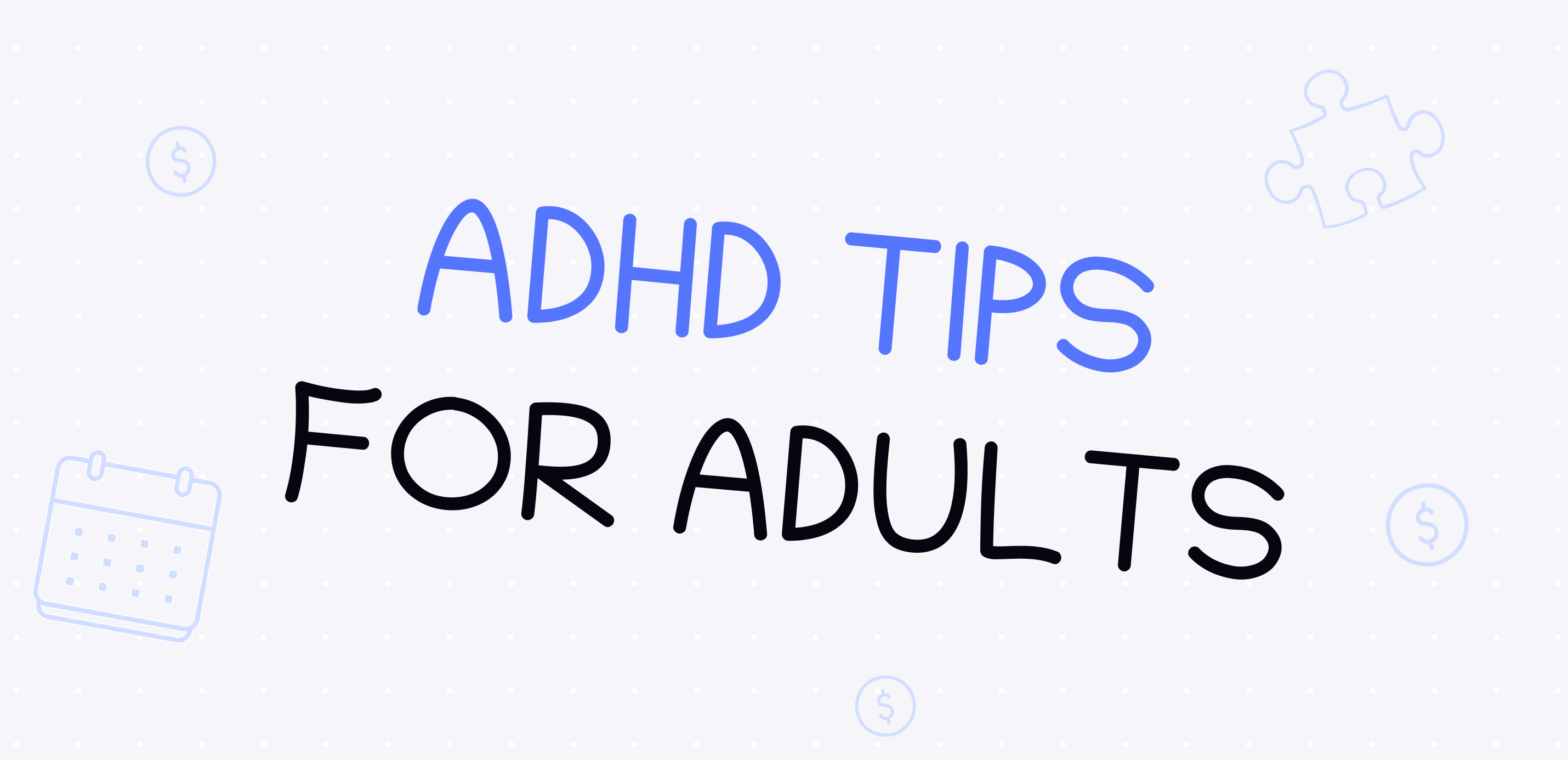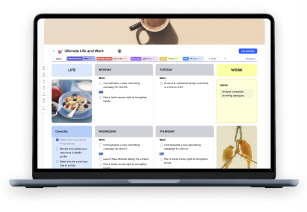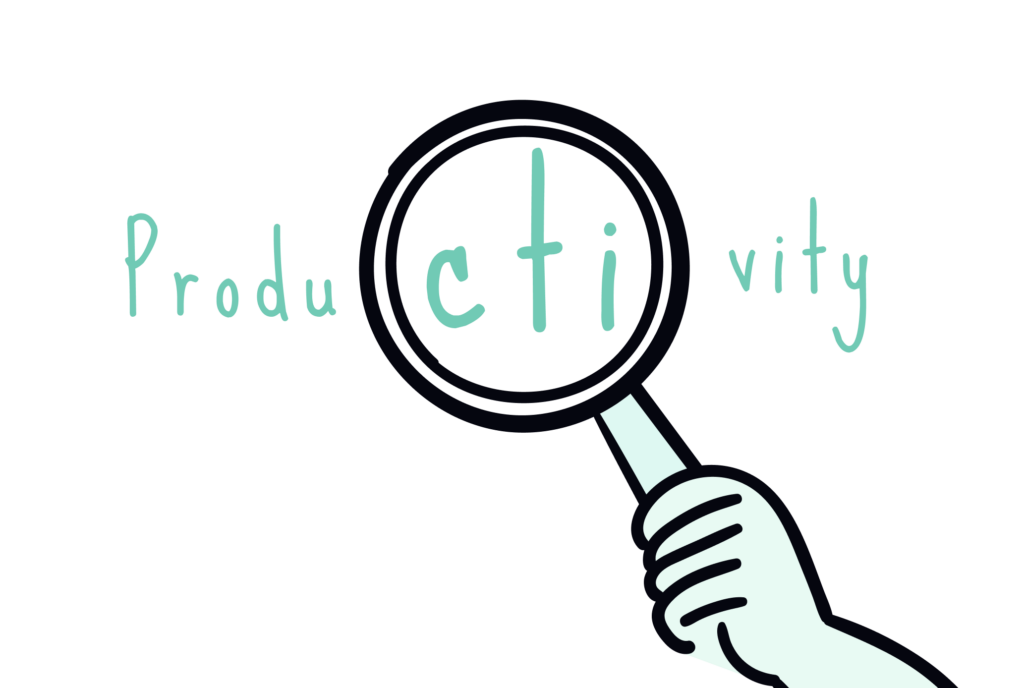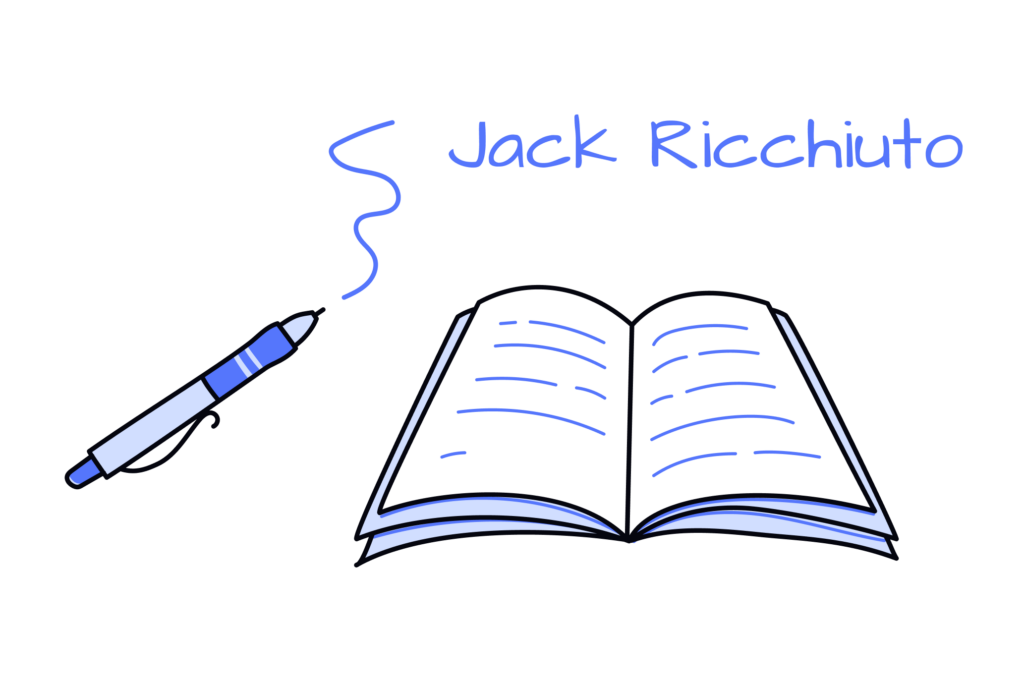Being an adult with ADHD is a special kind of struggle. If you have known about your condition for years, you probably have a few tricks in your sleeve you have learned over the years or when you were a kid. However, there are so many new tips and approaches to help you face the symptoms. If you’re newly diagnosed, you’re probably still looking for workable solutions and strategies.
This article is a quintessence of practical ADHD tips for adults that may make a big impact on everyday lives. We’ll cover all sorts of strategies to help with common ADHD challenges. We’ll also look at how to minimize distractions and improve decision-making and self-control in different situations.
Please note that these tips aren’t a replacement for professional medical advice. If you think you have ADHD or are struggling to manage your symptoms, see a mental health professional for proper diagnosis and treatment.
Understanding the ADHD Brain and Time Management
Living with Attention Deficit Hyperactivity Disorder (ADHD) means dealing with a whole different set of time management and task completion challenges. The ADHD brain processes information and time differently, which can cause big problems in daily life.
One of the biggest challenges for many adults with ADHD is time blindness. This means we have a distorted sense of time. We can’t estimate how long tasks will take or keep track of time passing. As a result, we are always running late, missing deadlines, or struggling to complete projects within timeframes.
ADHD can also affect executive functioning, which includes planning, organizing, and prioritizing. This can manifest in:
- Difficulty prioritizing: People with ADHD can’t differentiate between important and less important tasks, so time gets allocated poorly.
- Starting and stopping tasks: Initiating tasks, especially boring or hard ones can be tough. Hyperfocusing on interesting activities can make it hard to switch to other necessary tasks.
- Procrastination: Time blindness and executive function challenges combined means we put things off until the last minute.
- Impulsivity: Impulsive behavior means switching tasks or taking on new tasks without finishing current ones.
- Overwhelm: Having multiple directions or too many projects at once can lead to feeling overwhelmed and analysis paralysis.
These can create a cycle of stress and frustration, which can impact stress levels and overall mental health. However, understanding these challenges is the first step to developing strategies to manage them.
Let’s get started!
10 Effective Techniques for Managing ADHD
Time management can be especially tough for people with ADHD. However, the right strategies, adapted to personal traits and current situation, mixed with the tool that responds to your neurodivergent minds like xTiles, can seriously decrease the level of stress one experiences while increasing productivity. Here is what you can try:
1. Use Timers and Breaks
Breaking tasks into manageable steps can make them feel less overwhelming and more achievable. One way to do this is the Pomodoro Technique:
- 25 minutes of focused work
- 5-minute break afterwards
- After four sessions, take a longer break (15-30 minutes)

This helps with motivation and prevents burnout. You can use your phone or dedicated electronic devices as timers. Also, you can add a Pomodoro widget to your xTiles planner. This way, you will stay focused even more easily and have everything you need for work in one place.
2. Task Batching
Grouping similar tasks can save time and reduce decision-making fatigue. For example:
- Set specific times for checking and responding to emails.
- Combine errands like grocery shopping and picking up junk mail.
- Schedule all your phone calls or virtual meetings in one block.

This minimizes context switching and helps you stay focused on similar tasks. In xTiles, you can group your tasks within one tile (a basic unit for information organization) or within one group page if you need more space. For example, you may have a planner page where there are multiple tiles for grocery lists, habit tracking, meal planning, daily to-do, etc. Or you may have a project where one tab consists of a few planners. Let’s name it “September,” which can become an Index Page where you can collect your tasks and ideas for further sorting. Then, you can create such pages as Shopping, Reading Log, Daily, Fitness Planner, etc. After that, you can easily switch between the pages of your best day planner, keeping your planner neat.
3. Time Blocking
Set specific times for different tasks or projects to make progress. This can be helpful for big projects or multiple responsibilities:
- Use a day planner or Google Calendar to see your day visually. Also, you can use the Calendar in xTiles, which is accessible from any point in your planner, allowing you to stay on the page you’re currently working on and preserving your focus.
- Additionally, you can integrate your Google Calendar in xTiles to have an even fuller picture without inserting the data twice.
- Allocate time blocks for important tasks, meetings, and even breaks.
- Include buffer time between blocks for transitions or unexpected delays.

Time blocking helps create structure in your day and makes it easier to stay on task.
4. Color Coding
Color coding can be a powerful visual tool for organizing tasks and time management. ADHD app xTiles offers a wide pallet for arranging your ADHD journal with the color system that speaks to you. You can choose different colors for tiles (a basic unit for organizing data) and, within these tiles, add colorful banners to highlight the text.

Here are a few tips on how to turn colors into your reliable helper in organizing data:
- Assign different colors to different types of tasks or projects in your planner or digital calendar. You can add a “map” to your index page until you get used to your color coding scheme if it turns out that you have too many kinds of tasks to keep in mind all the colors.
- Use colored folders or labels for physical documents. In xTiles, you can add colors to page tabs, too. That will help you find the needed page at a glance.
- Use color-coded tags for digital files or emails.
5. Create Daily Schedules

Making a habit of creating daily schedules can be a roadmap for your day and help you stay on track and not get sidetracked. Planners for adult ADHD are a special category that should meet certain criteria. If chosen right, it will help you to manage symptoms, develop routines, and stay organized consistently.
xTiles offers many planners designed specifically for adults with ADHD.
However, you can also create your own daily planner based on our planner due to its easy customization and flexibility.
Choose your planner and try these:
- The night before, make a simple to-do list with your daily tasks for the next day. By making your schedule in advance you’re setting yourself up for a more focused day.
- Outline your important tasks so they get priority. You can tag them with colors and choose the priority to encourage yourself to do the tasks that matter, even if they are boring.
- Use the xTiles mobile app to keep your schedule handy. You can easily jot down ideas and tasks while on the go.
- Include work and personal tasks in your planner to get a full picture of your day.
6. Prioritize Tasks
Pursuing productivity, people often misunderstand it. Very often, being effective means you should put quality over quantity when it comes to task completion.
If it’s hard to decide which of your tasks is more important, use the Eisenhower Matrix to categorize tasks by urgency and importance. The system will guide you through piles of tasks that, sometimes, don’t need your time and attention.

Do your most important or hardest task when your energy is highest. This depends on your natural inclinations. Here are a few techniques to get you through the tasks you can’t finish:
- Use the “Eat the Frog” technique for this. Do your least favorite task first thing in the morning. For example, exercise, go through important mail, etc.
- Implement the “Swish Cheese Method.” When you’re feeling stuck, try making “holes” in your task by completing small, easy parts. This can help you gain momentum and progress even when you’re not fully focused.
- Use the “Two-Minute Rule.” Do small tasks that take less than two minutes to complete immediately rather than putting them off. This can prevent the buildup of small tasks that collectively feel overwhelming.
This way, you will have the rest of your day filled with all the good things you’re thrilled to do. If this task is recurrent, the best ADHD planner allows you to schedule this task one time and have it automated.
Don’t multitask, it often reduces productivity for people with ADHD. Time blocking will help you with this approach.
7. Minimize distractions
Individuals with adult ADHD tend to lose focus easily without any help. Distractibility is one of the core symptoms of ADHD. However, external distractions can make you lose even more time and energy. Organizing a workplace and workflow where you and your tasks are tête-à-tête helps to maintain focus on what is important.
Reducing external interruptions can help you focus:
- Turn off phone notifications during focused work periods.
- Use noise-canceling headphones to block out background noise.
- Choose a quieter space if you can.
- Tell family members or colleagues you need uninterrupted time.
A cluttered space, whether digital or physical, can be a major distraction for people with ADHD:
- Clean and tidy your physical space regularly.
- Create a system for organizing digital files and emails.
- Use a minimalist desktop background and organize your computer icons.
- Don’t keep unnecessary items on your desk that might trigger impulse purchases or random thoughts.
To manage your digital workspace:
- Use website blockers during work hours to block out distracting sites.
- Set electronic reminders to check email and social media.
- Consider using a separate computer account for work to minimize personal distractions.
- Use apps that track and limit your screen time.
Also, choose your digital space carefully. Ensure it is ADHD-friendly and has all the features you may need. xTiles planners for adult ADHD are suitable for a neurodivergent mind thanks to the drag-and-drop interface, visual organization, flexibility, and integration of different types of information. Also, by allowing you to organize information into “tiles,” xTiles can help reduce the feeling of being overwhelmed by long to-do lists. You can focus on one tile at a time, helping to manage the common ADHD challenge of feeling swamped by too many tasks.

Also, in xTiles users can work in focused mode, meaning they can open the needed tile to concentrate on its information, whether they plan, ideate, create, count, etc.
8. Build Routines and Habits
For adults with ADHD, having routines and habits can make a huge difference in managing ADHD symptoms and overall life. By having structure in your daily life you can reduce decision fatigue and increase productivity. Let’s look at some strategies for building and maintaining routines.
Routines help to automate daily tasks, reducing the mental effort required to plan them every day. Here are a few examples of actions and tasks that can be turned into an automated routine via an ADHD daily planner:
- Set times for meals, work, exercise, relaxation, medication intake, etc.
- Create a mail routine to deal with incoming mail regularly.
- Develop a bedtime routine to improve sleep.
- Plan your self-care routine, etc.

Remember, start small. Begin with one or two routines and build from there. Over time, you will develop this skill so even the most mundane task can be easily turned into a routine that works for you despite your ADHD symptoms.
9. Break Big Tasks into Smaller Steps
When faced with big, complicated tasks, breaking them down into smaller tasks makes them feel more doable:
- Divide large projects into a series of smaller, actionable steps
- Focus on one task at a time to avoid feeling overwhelmed
- Use a checklist or project management tool to track your progress
- Celebrate each small step to stay motivated

Research shows this approach makes tasks feel more achievable and gives you regular doses of accomplishment, which can be super motivating for people with ADHD.
10. Reward Progress
Celebrating small wins can be a big motivator and help staying focused if you know that there’s something special waiting for you. Surely, that is the best part of any task.
- Set up a reward system for completing tasks or reaching milestones. However, be careful. Establish a system to know what is worth a reward and when you need to try a bit harder. Make the rewards proportional to the task – bigger accomplishments deserve bigger rewards.
- Choose rewards that are meaningful to you – whether it’s a favorite snack (that’s why it’s important to be careful with rewards), a short break, or a fun activity.
- Share your achievements with supportive friends or family members. Also, you may become a member of support groups for people with Attention Deficit Hyperactivity Disorder.

Conclusion
Managing time with ADHD is definitely hard but surely achievable if you know what to do and have a few tips and tricks in your arsenal. These strategies can give you more focus, reduce the overwhelm you usually experience, and improve organization. For example, by using the Pomodoro method, time blocking, and task batching, you can stay focused and make big projects more manageable. Visual organization tools like xTiles will keep your tasks and thoughts in order, and decluttering your physical and digital spaces will keep your attention where needed most.
The key to long-term success with ADHD is consistency and knowing and using your strong sides. It’s more than normal to have setbacks from time to time – what matters is that you keep refining your approach and using all the available tips and tools to stay organized.
If you don’t want to spend another day feeling overwhelmed or unproductive, take the first step and sign up for xTiles and try out our ADHD-friendly planners. You may start with the Basic ADHD Planner and customize it to your needs. Then, you may choose one time management technique from this article and commit to trying it for a week. Small steps can add up to big changes.
Managing ADHD is a journey, not a destination. With the right tools and mindset, you can achieve your goals and thrive with ADHD.
.webp)
FAQ
How does breaking tasks into smaller steps help adults with ADHD?
Breaking tasks into smaller steps makes them feel more doable and less overwhelming. It gives you regular doses of accomplishment, which can be super motivating for people with ADHD. It helps you stay focused and make progress on bigger projects.
What are some ways to minimize distractions for adults with ADHD?
Turning off phone notifications during focused work time, using noise-canceling headphones, choosing a quieter workspace, and decluttering physical and digital space. Using website blockers during work hours and setting specific times to check emails and social media can help reduce digital distractions.
How do xTiles templates help adults with ADHD manage time and tasks?
xTiles templates like the ADHD Planner Basic and Ultimate ADHD Planner are designed for adults with ADHD. They have drag-and-drop interfaces, visual organization, and flexibility for neurodivergent minds. They help you break down tasks, set reminders, and organize information in a way that reduces overwhelm and improves focus.
Why are routines important for adults with ADHD, and how do you start building them?
Routines help automate daily tasks, so you don’t have to use mental energy for decision-making and planning. For adults with ADHD, this can be a game changer for time management and stress. Start with one or two simple routines (like a morning or bedtime routine) and build from there using xTiles planners to reinforce the habits.









